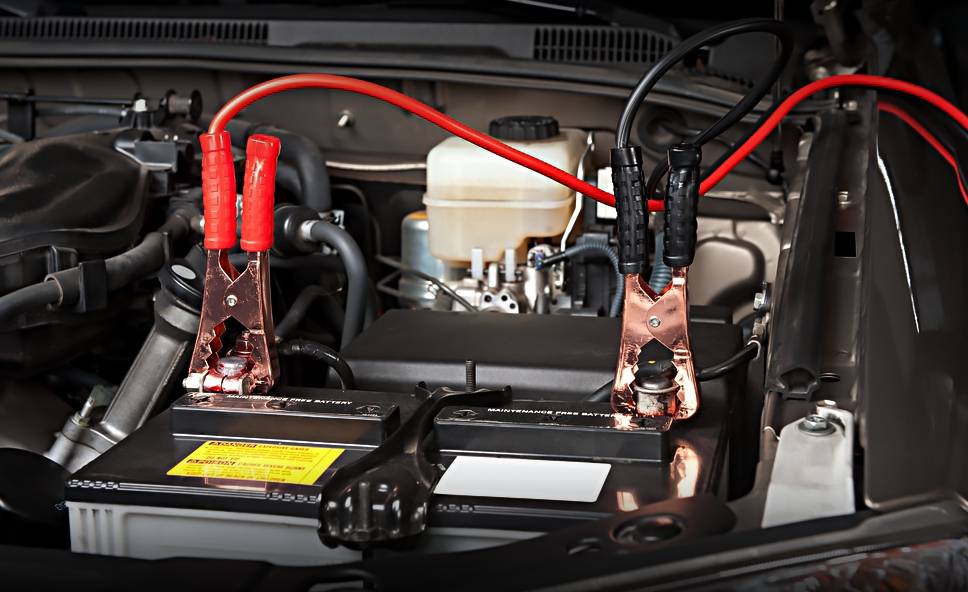If the battery is discharged below a certain threshold, the starter motor has no power to start the combustion engine. Despite this, it may have enough power to activate the radio or climate control and to turn on the instrument panel. One solution until the battery can be replaced is to use a portable charger or to make a connection to another vehicle’s battery, i.e. a jumper.
- Have good starting pliers. It is not advisable to skimp on the cheapest ones, because during the boot process they must withstand the temperature reached by the wiring well. They are sold in specialized automotive stores or on e-commerce platforms from just over 20 euros. You have to carry them in the trunk in case such an unforeseen event arises. This tool can be somewhat cumbersome due to the size of its cables.
- Have another car or a special starter for batteries of this type (a rechargeable battery with its own clamps) and check the compatibility of the voltage (normally 12 volts). You must start the car that has a load and let it idle with the lights on (so that they absorb possible power peaks), otherwise the electronic control unit could be damaged, the replacement of which is expensive.
- Respect the polarity of the cables and connect the four clamps in the following order: first the red cable to the positive of the car with load; Next, the other end of the red wire to the positive of the car without load; the black cable to the negative of the car with load and the remaining end, to a ground point in the unloaded car, that is, a metallic element, such as an unpainted screw in the engine compartment or a terminal (there are cars that have it signposted).
- Accelerate the car with load for a few seconds up to 2,000 or 2,500 rpm, put the ignition on the car without load, wait a few seconds and try to start it. You can insist on starting up for no more than 8 or 10 seconds. If it doesn’t start, wait a minute, let the cables cool down, and try a few more times. If the effect is not as expected and everything remains the same, do not insist and, better, call the insurance.
It is advisable to wear rubber gloves and avoid contact with materials that transmit electricity (especially metals and liquids). The unloaded car’s transmission should be in neutral if it’s manual and in P (park) if it’s automatic. If a jumper is made, make sure that the two vehicles are not touching each other, as this could cause a short circuit (with the danger this poses to our safety).
The useful life of a 12-volt battery for a car depends on many factors: the model, the manufacturer, the climate to which it is exposed and the intensity of use that is given to it. Usually they are between 3 and 6 years. Some brands consider it a wear item and their legal guarantees do not cover its replacement, as would happen with tires or brake pads. Its maintenance during the winter is essential.

